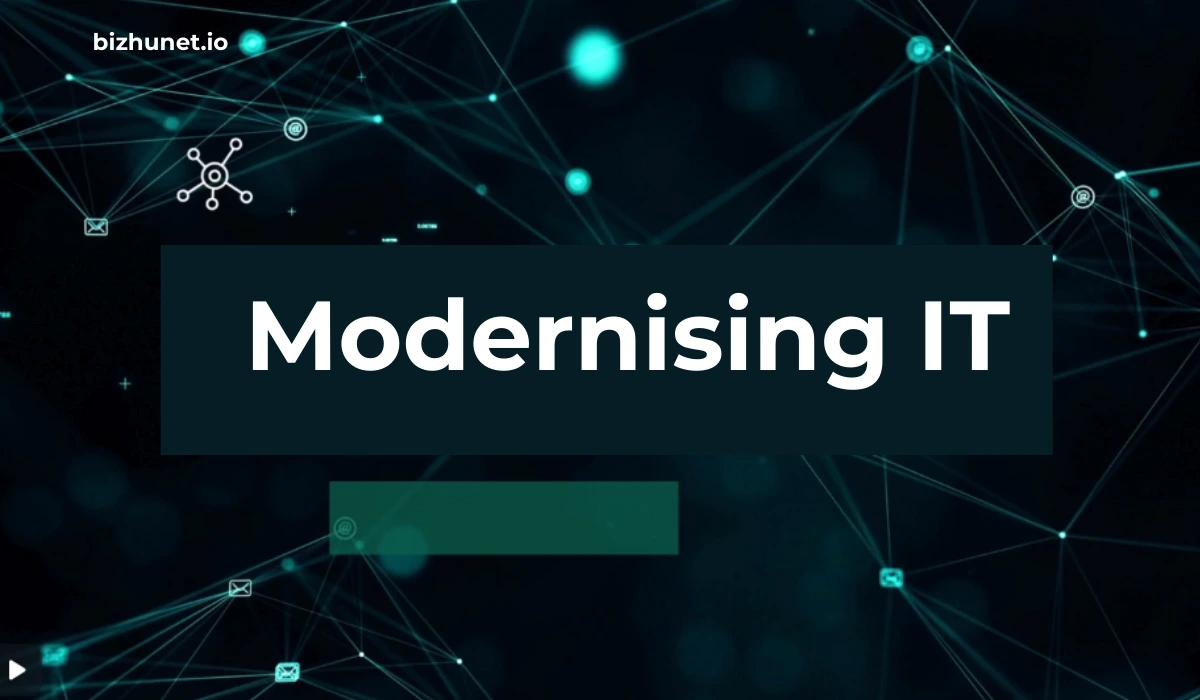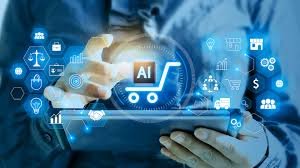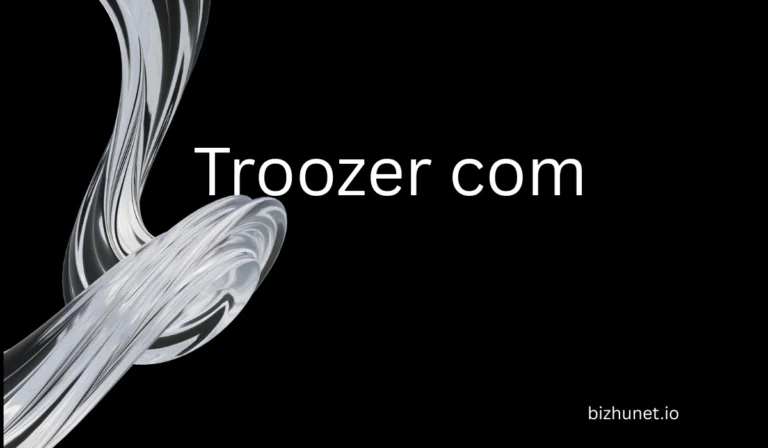Modernising IT: Essential Guide for Enterprises in 2025
Technology is evolving faster than ever, and businesses must keep pace. Modernising IT has become one of the most important steps for enterprises that want to remain successful in 2025. The process is not limited to new hardware or software. Instead, it involves building an IT environment that is agile, secure, and aligned with business goals.
Today, companies are moving away from rigid legacy systems and toward flexible, cloud-driven, and intelligent solutions. This article explores the meaning of modernising IT, best practices, benefits, challenges, and how it is shaping the future of enterprises.
What Is Modernising IT?
Modernising IT means upgrading infrastructure, applications, and digital strategies to improve efficiency, reduce risk, and create value. In practical terms, it requires replacing outdated systems with modern platforms, enhancing cybersecurity, and enabling automation.
In 2025, modernising IT is closely linked to digital transformation. Businesses are using AI, machine learning, and hybrid cloud systems to speed up workflows and gain insights. This transformation is no longer optional—it is critical for survival.
| Component | Legacy Approach | Modern Approach |
|---|---|---|
| Infrastructure | Physical servers on-site | Cloud and hybrid cloud |
| Applications | Large monolithic systems | Microservices and containers |
| Cybersecurity | Perimeter-based firewalls | Zero Trust security |
| Data Management | Disconnected storage units | Centralized and real-time access |
| Development | Slow waterfall model | Agile DevOps methods |
Why Modernising IT Is Vital in 2025
Customer expectations in 2025 are higher than ever. People demand faster services, seamless online experiences, and strong security. Legacy systems cannot deliver this level of performance.
Modernising IT gives enterprises the ability to innovate and compete. Outdated systems increase costs, limit growth, and expose businesses to cyber threats. By modernising IT, companies can boost productivity, improve customer satisfaction, and strengthen resilience.
Read more: Crypto30x com ac milan
Practices for Modernising IT
Modernisation is a structured process. It begins with understanding current systems and identifying areas for improvement. Once the assessment is complete, enterprises build a roadmap that aligns IT upgrades with business priorities.
Cloud migration is one of the most common modernization practices. By moving applications to cloud platforms, businesses gain scalability and cost control. Automation is another important step. Automating IT operations reduces errors, speeds up workflows, and allows teams to focus on innovation.
Equally important is the human side of modernization. Employees must be trained to use new systems, and leadership must encourage a culture of change. Without organizational alignment, modernising IT becomes a technical exercise rather than a strategic shift.
Benefits of Modernising IT

Efficiency for Staff
Legacy tools require constant attention from IT staff, reducing productivity. By upgrading systems, employees can focus on meaningful projects instead of daily troubleshooting.
Business Agility
Modern platforms provide the ability to adapt quickly. Enterprises can launch new services, respond to market demands, and scale operations much faster.
Stronger Security
New IT models integrate advanced defenses like AI-driven monitoring and Zero Trust architecture. These systems reduce risks and improve compliance.
Cost Control
Although modernization projects involve initial costs, the long-term savings are significant. Automated systems lower maintenance expenses and prevent outages that can lead to revenue loss.
| Benefit | Enterprise Impact |
|---|---|
| Staff Efficiency | Focus on innovation instead of repairs |
| Agility | Faster delivery of services |
| Security | Better protection from cyberattacks |
| Cost Management | Reduced outages and maintenance costs |
| Growth | Better customer experiences drive sales |
Challenges in Modernising IT
While the advantages are clear, organizations often face obstacles.
1. Legacy Integration – Many enterprises still rely on decades-old systems that are difficult to migrate.
2. Budget Issues – Initial modernization requires heavy investment in hardware, software, and skilled staff.
3. Cultural Resistance – Employees may resist change, fearing disruptions to their work routines.
4. Cybersecurity Gaps – If modernization is rushed, security weaknesses may appear.
Enterprises must overcome these challenges through careful planning, employee training, and phased implementation.
Technologies Driving IT Modernisation in 2025
The modernization journey is fueled by emerging technologies.
- Artificial Intelligence (AI) is automating tasks and improving cybersecurity.
- Cloud computing offers scalability, flexibility, and reduced costs.
- Edge computing brings data processing closer to devices, lowering latency.
- Internet of Things (IoT) connects systems in healthcare, manufacturing, and smart cities.
- Containers and microservices simplify application deployment and management.
Together, these technologies form the backbone of IT modernization in 2025.
Best Practices for Enterprises Modernising IT
Modernising IT is most successful when companies take a strategic approach. Start by analyzing current systems to identify gaps. Build a roadmap that balances short-term wins with long-term transformation.
Training employees is just as critical as upgrading systems. Skilled staff are more confident in adapting to new platforms. Managed service providers can also help enterprises handle complex migrations and fill skill gaps.
Finally, success must be measurable. Using KPIs ensures modernization efforts deliver real results, from lower costs to improved security.
Read more: Blogsternation com
Future Outlook: Modernising IT Beyond 2025
The importance of IT modernization will only grow in the coming years. By 2030, most businesses will rely on cloud-native applications, AI-driven cybersecurity, and real-time analytics. Automation will handle much of the manual IT work, freeing teams to focus on innovation.
Enterprises that modernise today are building the foundation for future growth. Those that resist risk being left behind in an increasingly competitive world.
Frequently Asked Questions
What does modernising IT mean?
It means upgrading old systems with modern, secure, and efficient technology.
Why is modernising IT critical in 2025?
It allows businesses to stay competitive, secure, and ready for digital demands.
What are the risks in modernising IT?
The main risks are high costs, complex migrations, and cybersecurity issues.
How does modernising IT improve productivity?
It automates tasks and frees staff to focus on innovation and business goals.
Conclusion
Modernising IT is no longer a choice but a necessity for enterprises in 2025. Companies that continue relying on outdated systems risk inefficiency, higher costs, and increased exposure to cyber threats. By adopting cloud platforms, automation, artificial intelligence, and modern data management practices, businesses gain agility, resilience, and the ability to innovate faster. Modernisation also improves customer experiences by providing secure, seamless, and reliable digital services.
While challenges such as budget constraints and cultural resistance exist, the long-term benefits outweigh the risks. Enterprises that prioritize IT modernization today will not only protect their operations but also position themselves as leaders in a digital-first economy, ensuring long-term growth and competitiveness.
Enterprises that embrace modernising IT today will gain the resilience, agility, and competitiveness needed to thrive in the digital future.






